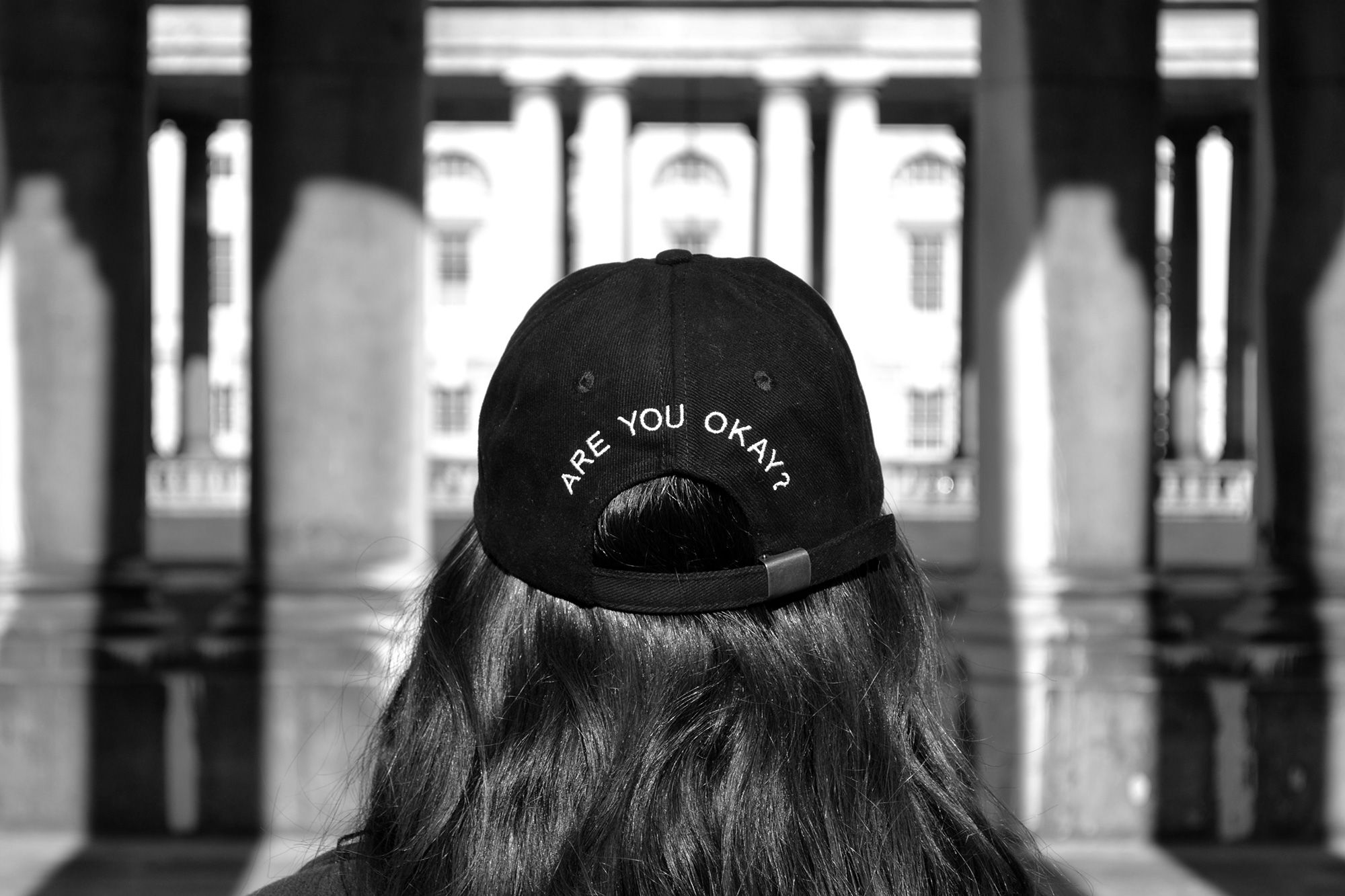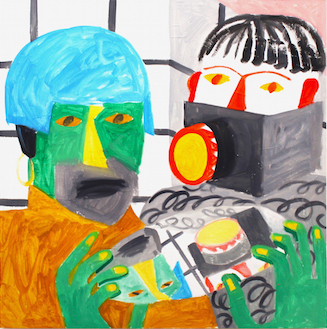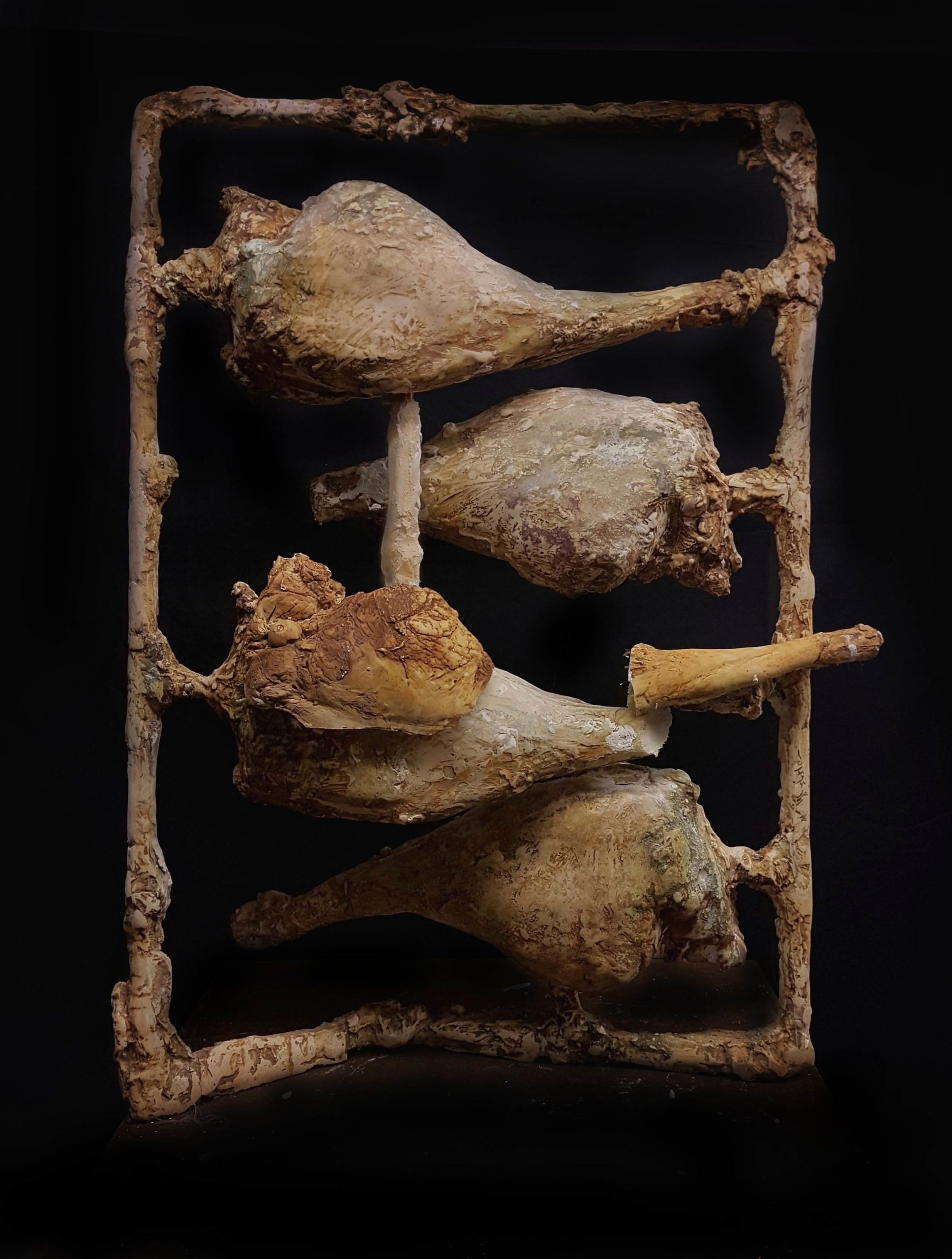Judith Weik, Coordinator of Art at the Alison Richard Building, speaks to Yas Rix, curator of Ground Zero Earth. The exhibition is located on three floors of the Alison Richard Building at the University of Cambridge and runs until 22 March 2019.

Artwork by Olivia Domingos
Q: What is your exhibition about?
Ground Zero Earth is a bid to find optimism in the study of catastrophe, a curated collaboration with the Centre for the Study of Existential Risk, University of Cambridge (CSER) one of the first research centres dedicated to the research and mitigation of risks that could lead to extinction or civilisational collapse. The five artists selected for this show explore themes relevant to CSER’s research, with a focus on man-made catastrophe. Alongside addressing how we think about existential risks the exhibition focuses on emerging technologies, food production, security, climate change and how many of these risks are interconnected. By attempting to understand the risks we face as a species, learning from those at the forefront of cutting-edge research, we have a better chance of mitigating such disasters that may be low-risk but high impact.
There is now more thought taking place into safeguarding our future, our planet and the potential for transhumanism, with gravitas on decision makers to start considering longer-term strategy and generations not yet born who will be impacted by our current actions. This exhibition sets out to communicate what is at stake and provide a grounded perspective on ways in which we should be looking at the future with consideration on how they may too look back at us.
Q: How did you conceive this exhibition?
I had an initial interest in the subject of existential risk stemming from early discussions about the impact of nuclear war, alongside observing internet ‘prophecies’ which attempted to predict close-call asteroid impact without much scientific basis!
To realise at a young age the technological capabilities we have to destroy each other is unsettling, but it determined my view of the fragile world we live in and it’s something I think about often and informed my conceiving of this collaboration.
I have followed CSER’s work for three years, attending their lectures and events. Namely, the first talk I went to was by Dr David Denkenberger, Director and Founder of Alliance to Feed the Earth in Disaster (ALLFED), who discussed how we can grow food and sustain life if our sun was blocked out as a result of nuclear winter or asteroid impact. I began observing trends in exhibition making around themes of artificial intelligence and began to think to myself how this could be approached differently. Furthermore, the Art at the ARB programme felt very relevant to approach for this exhibition since CSER originally started at CRASSH.
The future is currently an ever-trending subject matter. I decided to combine my vocation in curating with exploring the concepts of risk, bringing together artists I was familiar with and a vision of how their approaches can inform the audience coherently in a witty and heart-felt manner. I was interested in artistic practices that were based on research and wanted to shy from anything overly fictional and fear mongering.
The term ‘Ground Zero’ summarised these risks as a collective beginning and conclusion, and in full, the title is provocative of our earth being subject to these risks whether directly or indirectly, as previously opposed to one specific geographical location.

Artwork by Daniel Sean Kelley
Q: What can we expect from the exhibition display?
Expect romantic drone walks, a sculpture you can sit on and future protest materials.
Displayed is a range of media to absorb, from sculpture to video, painting and illustration. I was aiming for a museum feel, with a lot of context and information provided with wall text and quotes. The diversity in mediums complement each other and provokes conversation; there are bold statement pieces and overall a high quality of artistic practice that can be identified and resonated with by each visitor.
Q: Apart from those interested in art, who would this exhibition be of interest to?
This exhibition is of interest to anyone that considers the future of humanity on a regular basis, and I would hope that is most audiences. It should appeal to students, the scientific community, conservationists, and those within the political sciences and humanities.
There is a scarcity of platforms to exhibit in Cambridge, especially to young emerging artists exploring cutting edge ideas, so to have this opportunity was a fantastic experience. I hope that it can prove that more exciting things can happen in contemporary art within the city outside of establishments and cater for an audience looking for something more challenging than the status-quo. Most importantly, I would like the general public to take an interest. Whether people come for the theme or the artwork, I hope many can take something away from it.
Q: Is there a book or catalogue to go with the exhibition, and where is it available?
There is a physical copy of the exhibition booklet at the Alison Richard Building and shortly a digital PDF available on CSERs website.
Please feel free to tweet or Instagram the exhibition with hashtag #groundzeroearth to ensure a digital record of the experience for future generations.

Artwork by David Lisser
Yasmine Rix (b.1991) is an independent curator and collaborator. Supporting emerging artists, she has written for Young Artists in Conversation since 2015 and previously collaborated on events in the Midlands with live art provision and workshops. More recently she was guest curator of isthisit? online digital platform and upcoming for Rung Issue 02. She takes particular interest in arts development and sector sponsorship.
Olivia Domingos (b.1991) is an artist and illustrator based in London. Exploring installation and drawing, she has produced works with a focus on celebrity culture and challenging the public domain of wellbeing. Her rendering of specific events and their detail brings attention to falling victim to voyeurism of celebrities or news sensationalism.
Bob Bicknell-Knight (b. 1996, Suffolk) is a London-based artist and curator working in installation, sculpture, video and digital media. Using found objects and tools made readily available by the Internet, as well as drawing from a unique sensibility influenced by participation in online communities and virtual games, Bicknell-Knight’s work explores the divergent methods by which consumer capitalist culture permeates both online and offline society.
Daniel Sean Kelly (b.1989, Leicester) is an artist and co-director of Two Queens artist-led gallery and studios. Working largely in painting, printmaking and ceramics, his work seeks to create a speculative space for the imagining of other realities – a science fictional universe comprised only of objects existing in the world up to this point.
David Lisser (b. Wolverhampton 1987) is an artist based in Newcastle who investigates our relationship with food and emerging technologies, playfully creating artefacts excavated from an imagined past, documentation of protests that haven’t yet materialised, and mechanisms for producing novelty meats.
Jillian Mayer (b. 1986) is an artist and filmmaker living in Miami, Florida. Through video, sculptures, online experiences, photography, performances and installations, she explores how technology affects our lives, bodies and identities. Mayer investigates the points of tension between our online and physical worlds and makes work that attempts to inhabit the increasingly porous boundary between the two.

